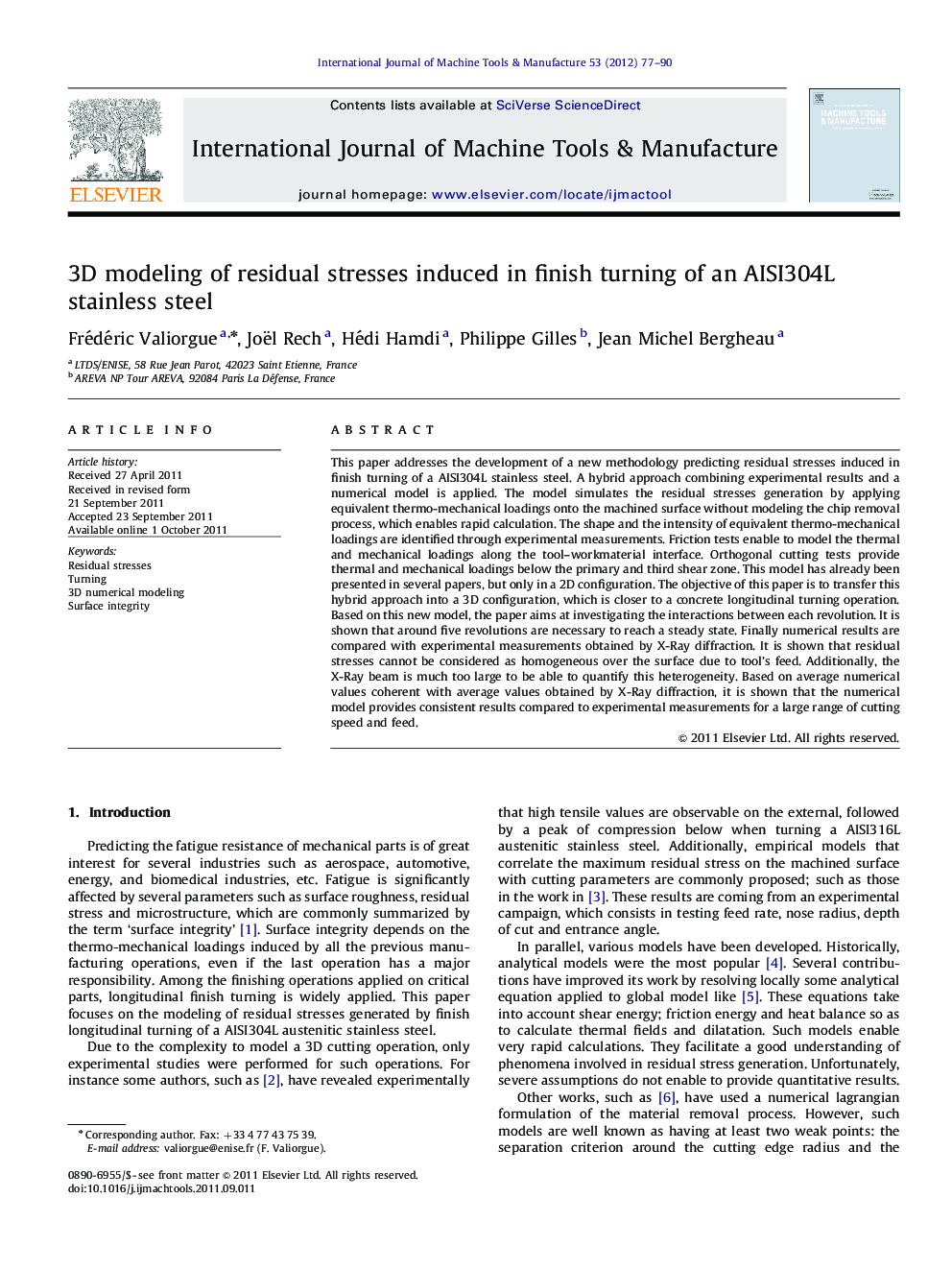| کد مقاله | کد نشریه | سال انتشار | مقاله انگلیسی | نسخه تمام متن |
|---|---|---|---|---|
| 781864 | 1464537 | 2012 | 14 صفحه PDF | دانلود رایگان |

This paper addresses the development of a new methodology predicting residual stresses induced in finish turning of a AISI304L stainless steel. A hybrid approach combining experimental results and a numerical model is applied. The model simulates the residual stresses generation by applying equivalent thermo-mechanical loadings onto the machined surface without modeling the chip removal process, which enables rapid calculation. The shape and the intensity of equivalent thermo-mechanical loadings are identified through experimental measurements. Friction tests enable to model the thermal and mechanical loadings along the tool–workmaterial interface. Orthogonal cutting tests provide thermal and mechanical loadings below the primary and third shear zone. This model has already been presented in several papers, but only in a 2D configuration. The objective of this paper is to transfer this hybrid approach into a 3D configuration, which is closer to a concrete longitudinal turning operation. Based on this new model, the paper aims at investigating the interactions between each revolution. It is shown that around five revolutions are necessary to reach a steady state. Finally numerical results are compared with experimental measurements obtained by X-Ray diffraction. It is shown that residual stresses cannot be considered as homogeneous over the surface due to tool's feed. Additionally, the X-Ray beam is much too large to be able to quantify this heterogeneity. Based on average numerical values coherent with average values obtained by X-Ray diffraction, it is shown that the numerical model provides consistent results compared to experimental measurements for a large range of cutting speed and feed.
► We built an hybrid approach to model turning residual stresses formation.
► We applied this new hybrid method to 3D multipass analysis.
► We found that steady state for residual stresses formation need to be reached.
► We found that measured residual stresses are corresponding to an average value.
► We found that surface residual stresses can spread around 200 MPa over the mean value.
Journal: International Journal of Machine Tools and Manufacture - Volume 53, Issue 1, February 2012, Pages 77–90